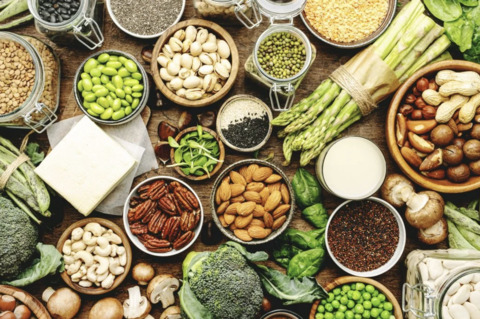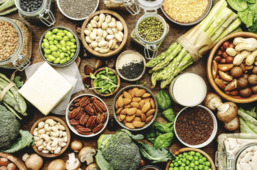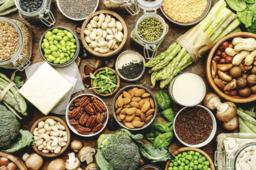
Eating well is non-negotiable for a vibrant, healthy life, yet the cost of quality groceries often feels like a barrier. Many assume that nutritious eating is inherently expensive, leading them toward the convenience of cheap, processed options. The truth is, with a strategic approach and a little planning, you can fill your basket with wholesome foods without emptying your wallet.
This isn't just about cutting corners; it's about becoming a smarter, more efficient shopper and cook. We'll explore practical techniques for stretching your food dollar while keeping your meals delicious, nourishing, and exciting, just like a seasoned culinary insider.
- Check Digital and Print Flyers: Before you write your shopping list, consult the weekly flyers, both in print and via store apps. Plan your meals based on discounted items, especially protein sources and shelf-stable staples.
- Embrace Digital Coupons: Many retailers offer significant savings through loyalty programs and mobile apps. Clipping these digital coupons is an effortless way to shave dollars off your final bill.
- Price Match (Where Available): Some stores offer price matching on competitors' flyers, saving you the trip across town.
- Pantry Essentials: Stock up on items like dry beans, lentils, whole grains (rice, oats, quinoa), nuts, and seeds when you find a good sale. These are nutritional powerhouses that store well for months or even years.
- Buying Clubs and Co-ops: Consider joining a local food co-op or buying club. These groups leverage collective purchasing power to get discounted prices on produce, grains, and even certain packaged goods. This is a fantastic way to access high-quality ingredients at below-retail prices.
- Flavor and Nutrition: Seasonal produce hasn't traveled as far, meaning it retains more nutrients and tastes infinitely better than its out-of-season counterpart.
- Preserve the Savings: If your favorite seasonal vegetable is a steal, buy extra.
- Freezing or canning is an excellent way to capture the nutritional value and low price for use months later.
- Bargaining: At a farmers market, a polite request for a discount, especially on a large amount, is often welcomed.
- Community Supported Agriculture (CSA): By joining a CSA, you pay a fixed fee upfront to a local farm and receive a weekly share of their harvest. It provides a consistent supply of varied, ultra-fresh, and locally grown produce at a cost that is frequently lower than grocery store prices. Plus, it directly supports your local farming community.
- Create a Menu: Dedicate a bit of time each week to mapping out your meals. This ensures you buy only what you need.
- The Zero-Waste List: Base your grocery list only on your meal plan. This simple step cuts down on those expensive, unnecessary items that clutter your pantry and often go bad before you use them.
- Cook Large: Devote a couple of hours on a weekend to prepare large portions of foundational ingredients, like cooked grains, roasted vegetables, and a big batch of soup or chili.
- Freezer Management: Portion out the cooked food into single-serving, freezer-safe containers. Properly labeling and dating them is essential. Having pre-made, healthy meals in the freezer makes it easy to skip the drive-thru when hunger strikes.
- Nutritional Powerhouse: They are incredibly versatile, cheap, and packed with plant-based protein, iron, and fiber.
- Versatility: From soups and stews to salads and even a beef substitute in chili or tacos, beans and lentils can anchor dozens of meals for pennies per serving. They also have the added benefit of being very filling, keeping you satiated longer.
- Cook from Scratch: Preparing meals at home using whole ingredients like fresh fruits, vegetables, whole grains, and lean proteins is almost always more cost-effective and nutritious.
- Long-Term Health Savings: Reducing your reliance on processed foods is one of the best investments you can make in your long-term health, potentially saving on future medical costs.
- Read the Label: Always compare the ingredient and nutrition labels. In many cases, the store brand product is nutritionally identical or even superior to its name-brand counterpart, often at a 20-40% discount.
- Herb Savings: Growing herbs like basil, mint, chives, and rosemary in a simple window box or small container garden will save you money. Fresh herbs are expensive at the store and often wilt before you can use them all.
- Simple Veggies: Start with easy-to-grow, high-yield vegetables like leaf lettuce or cherry tomatoes. The initial effort quickly pays off with a supply of free, ultra-fresh produce.
- Freeze Meat Immediately: When you buy meat or poultry on sale, divide it into meal-sized portions and freeze them immediately. This extends their shelf life from a few days to several months.
- First-In, First-Out (FIFO): In your fridge, place older perishable items (like opened yogurt or cut veggies) at the front so you use them first.
- Use Up Ends: The last bit of aging vegetables can be transformed into a simple stock or added to an omelet, preventing them from being thrown away.
- Compost: If you do have a garden, keep your scraps for compost. You also might be able to donate to a compost bin at a community garden or farm.
- Prioritize: Spend your organic dollars on the "Dirty Dozen" items (like strawberries, spinach, and apples) where conventional varieties have the highest residue.
- Save: Buy conventional versions of the "Clean Fifteen" items (like avocados, corn, and pineapple) where residue levels are naturally very low.
- Eggs: One of the cheapest and most versatile complete proteins available.
- Canned Fish: Canned tuna, salmon, and sardines are packed with protein and omega-3 fatty acids, and are inexpensive pantry staples.
- Tofu and Tempeh: These soy-based products are very budget-friendly, soak up flavors well, and are excellent sources of plant protein.
- Chicken Thighs and Drumsticks: These cuts of poultry are significantly cheaper than breast meat and are flavorful and nutritious.
- The "Rule of Three": Plan to cook three main meals for the week. Make large batches of each so you have leftovers for lunch or dinner the next day.
- Theme Nights: Assign a theme to each night (e.g., Meatless Monday, Taco Tuesday, Pasta Thursday). This reduces decision fatigue.
- Utilize a Core Ingredient: Choose one cheap ingredient (like a bag of potatoes or a big container of rice) and plan three different meals around it to ensure nothing goes to waste.
- Slow Cooker/Instant Pot: These allow you to cook cheaper, tougher cuts of meat until they are tender and delicious, and they make cooking large batches of beans and grains simple and hands-off.
- Good Knives: A sharp set of knives makes meal prep much faster and safer, encouraging you to cook more.
- Storage Containers: Investing in a good set of airtight, stackable containers is crucial for efficient meal planning, bulk freezing, and minimizing food spoilage.
Mastering the Grocery Game: Sales and Bulk Buys
The single biggest factor in budget-friendly health is how you approach the store. You need to become an active consumer, not a passive one.
Hunt for Deals and Utilize Coupons
Don't just walk into the supermarket and buy what you need; plan your week around what's on sale. Grocery stores regularly feature specials to draw in customers. It can take some time and planning, but in the end the money you save will be worth it.
The Power of Bulk Purchasing
For items with a long shelf life, buying in larger quantities drastically reduces the cost per unit.
Strategically Stocking Your Pantry
A well-stocked pantry acts as a foundation for quick, budget-friendly meals. When non-perishable staples like canned tomatoes, broth, pasta, and whole grain flour are on sale, buy enough to last you until the next cycle. Having these items on hand means you can always whip up a hearty meal, preventing expensive last-minute takeout orders.
Freshness and Value: Shopping for Produce
The produce aisle can be intimidating, but a seasonal and local approach ensures you get the best flavor for the least amount of money.
Shop In Season
This is the golden rule for affordable produce. When a fruit or vegetable is in season, it is abundant, at its peak flavor, and consequently, cheaper.
Explore Local Farmers Markets and CSAs
Don't dismiss your local farmers market as a boutique, expensive option. Often, you can find deals, especially toward the end of the day when vendors are looking to sell off remaining stock.
Kitchen Efficiency: Cooking Smarter
Your cooking habits are just as important as your shopping habits in the quest for affordable healthy eating.
The Power of Meal Planning
Successful budgeting starts with a plan. Meal planning is the most effective way to eliminate food waste and reduce impulse buys.
Embrace Bulk Cooking and Freezing
Batch cooking is a time and money saver that provides convenient, healthy meals during busy workweeks.
Smart Swaps: Ingredient Decisions
Making smart substitutions in the grocery aisle can dramatically impact your budget without sacrificing nutrition.
Don't Underestimate Legumes
If you're looking to reduce your meat intake for budget or health reasons, look no further than beans and lentils.
Ditch the Processed Aisle
Processed foods, despite their perceived convenience, are generally more expensive per calorie than whole, natural ingredients. They are also often loaded with cheap, unhealthy fillers like excess sugar, salt, and unhealthy fats.
The Store Brand Advantage
Don't be a brand snob. Store brand (or private label) items are a massive opportunity for savings.
Quality Comparison: Most store brands are manufactured by the exact same facilities that produce the national brands. They simply lack the expensive marketing and packaging.
Grow Your Own
You don't need a massive backyard to start gardening.
Frequently Asked Questions (FAQ)
1. Is frozen produce just as healthy as fresh produce?
Yes, in many cases, it can be even more nutritious. Fruits and vegetables intended for freezing are picked at their peak ripeness and immediately flash-frozen. This process locks in their vitamins and minerals. Fresh produce, by contrast, can lose nutrients during the days or weeks it spends in transit from the farm to the store shelf. Frozen vegetables are a budget staple that should always be in your freezer.
2. How do I prevent food waste from perishable items like meat and dairy?
The key is efficient storage and planning.
3. Can I eat organically and still stay on a tight budget?
Absolutely. It requires prioritizing your organic purchases. Follow the Dirty Dozen and Clean Fifteen guidelines, a list compiled annually that ranks produce by pesticide residue levels.
4. What are the best cheap and healthy protein sources besides beans and lentils?
There are several excellent options:
5. How can I make simple meal planning work for a beginner?
Start small and keep it flexible.
6. Is it always cheaper to cook at home than to eat out?
Almost always. The average restaurant meal costs several times more than preparing the same meal at home due to labor, overhead, and profit margins. Even seemingly inexpensive fast food meals add up quickly. Cooking at home gives you complete control over your ingredients, portion sizes, and fat/sodium content, making it the healthier and more budget-conscious choice in the vast majority of situations.
7. Are there any healthy kitchen tools that can save me money in the long run?
Yes, investing in a few key items can lead to significant savings:

Conclusion:
Healthy eating isn't a luxury; it's a matter of strategy. By adopting a mindset of planning, purchasing seasonally and locally, and prioritizing cost-effective whole foods like legumes and grains, you can significantly reduce your grocery bill while drastically improving the quality of your diet. This shift is not a temporary diet, but a sustainable change that benefits your wallet and your long-term health.
Related posts




